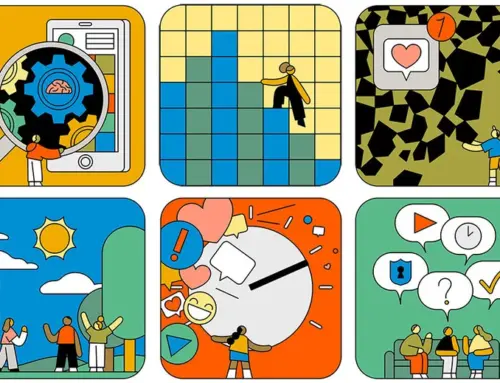Fortune
March 2018
Last week, Fitbit announced the launch of the Fitbit Ace, a fitness tracker created especially for children.
As a certified eating disorder specialist, I have some concerns.
It’s a tough conundrum. According to the Centers for Disease Control and Prevention (CDC), obesity now affects one in six children and adolescents in the U.S. For many youth, diversifying food choices and increasing movement may help to promote improved health.
Conversely, it is important to consider the rise in adolescent and pediatric eating disorders, often seen starting to develop during the same age range as the Ace’s target audience. I have seen first-hand the effects that anti-obesity campaigns can have on populations who might struggle with poor body image or be at risk for developing eating disorders. According to a Common Sense Media report, more than half of girls and about one-third of boys aged 6 to 8 think their ideal weight is thinner than their current size. By age 7, one in four kids has tried dieting.
One of the main features of the Ace is its push notification system, which sends a reminder to move when the user has been sedentary for an extended period of time. While the CDC recommends that children aged 6 to 17 engage in at least 60 minutes of active movement a day, such reminders have the potential to become problematic.
My biggest concern with the device is that it gives the instruction to move without explaining why moving is important. Alerts that are pushed through the tracker might cause children to solely focus on the device’s command, rather than empowering them to intuitively listen to their bodies. Encouraging children to be active only when a device tells them to can cause children to lose their ability to recognize bodily cues such as fatigue or even pain.
Michael Chiumiento, the clinical supervisor for Walden Behavioral Care’s adolescent and family programming, worries this device sends the message that children or adolescents—who already receive mixed messages about what is considered healthy from the media—should be responsible for monitoring their own health without medical or clinical oversight.
“I think using this device to monitor children’s activity is a miss for parents,” Chiumiento told me. “It takes the responsibility of having conversations around weight, weight stigma, body image, and overall health away from the parent and onto the child to navigate for themselves.”
In my line of work, Fitbits and similar fitness tracking products can be triggering. Many of our clients focus obsessively on numbers, which can make it challenging to see big-picture goals of improving health and promoting a mindful relationship with movement.
While many people begin using a fitness tracker with the intention to improve their overall wellbeing, many shift to using this device to support disordered behaviors. Individuals often then become compulsively preoccupied with reaching a certain amount of steps. We see extreme rigidity in day-to-day fitness routines and engagement in exercise—even despite injury or sickness. If a fitness goal is not met, our clients often experience overwhelming feelings of guilt, shame, or embarrassment.
The Ace also allows for youths to set up challenges with friends, win virtual trophies, and compare their progress with others’. Though comparison and competition are a built-in aspect to most children’s developmental experiences—like moving up in grades, making a team, or winning a contest—these traits can often be key features in eating disorder presentations. Many clients treated in our clinics report experiencing a hyper awareness not only of their own body shape, weight, or meal plan, but also compared these “stats” against their peers in and out of treatment. Bringing this same level of comparison to fitness and movement may have unintended negative consequences for mental and physical health.
“While the device may intend to encourage group activity, those who are vulnerable to disordered eating behaviors may be at risk for utilizing it in a way that actually increases isolation and obsessive self-focus,” said Chiumiento.
If you do decide to purchase an Ace or similar product for your child, I would suggest open communication with them about the product and why you think it might be a positive addition to their life. And be sure to consult with medical and behavioral health providers to ensure the trackers pose no additional risks to you, your child, or the rest of your family.
We all want what is best for our children. The media is constantly bombarding us with new—and sometimes contradictory—messages of what we “should” do to reach optimal healthfulness. Some research tells us that obesity is an epidemic that needs to be treated. But there is also ample evidence disproving that weight is an indicator of health. These messages are confusing and don’t take into account what children’s bodies are already innately designed to do: live.
I’d like to propose a different narrative. Instead of enlisting yet another technological device for our children to rely on, why don’t we use movement as a way increase kids’ self-awareness, confidence, and self-esteem? Let’s encourage them to move because it feels good; not because a watch is telling them to.
Joanna Imse is the assistant program director of Walden Behavioral Care’s Amherst, Mass. clinic.






